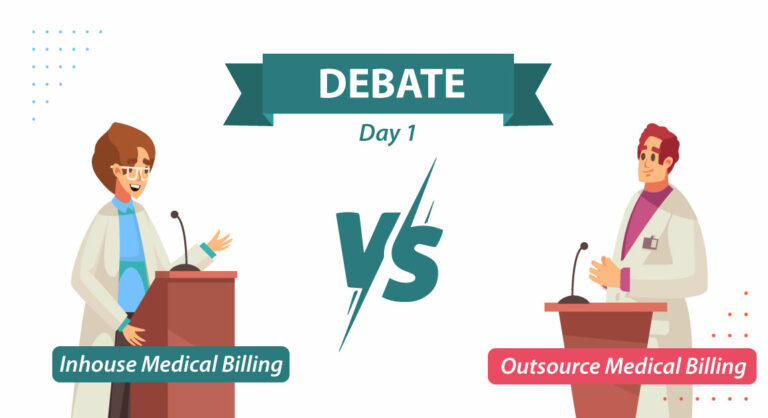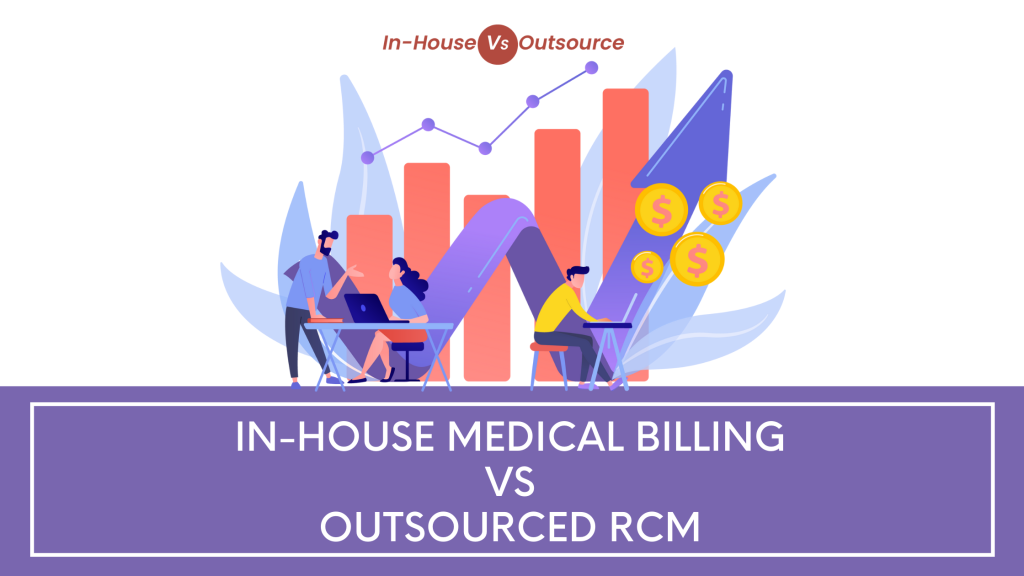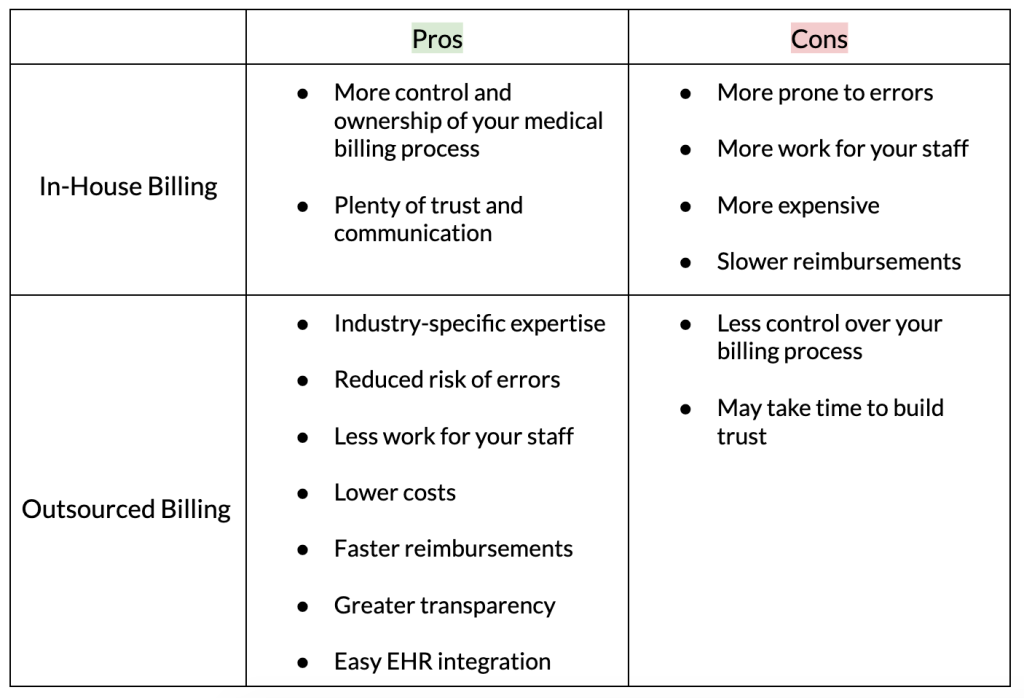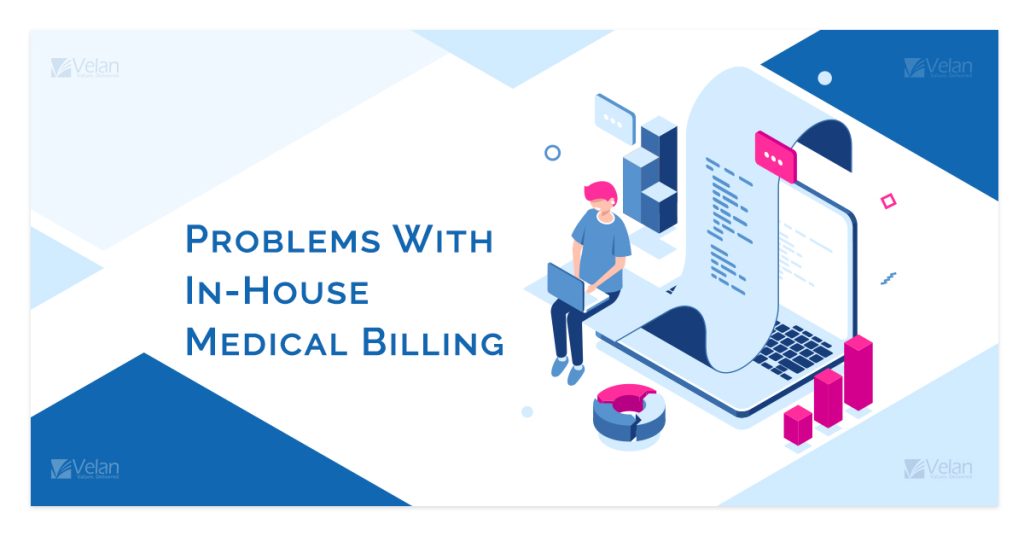Introduction
Welcome to our website! Here, we aim to provide you with valuable information regarding medical fee solutions, specifically focusing on understanding inhouse medical billing. In this post, we will discuss what inhouse medical billing is and the importance of implementing it in your healthcare facility.
What is Inhouse Medical Billing?
Inhouse medical billing refers to the process of managing and processing medical claims and reimbursements within your organization, rather than outsourcing these tasks to a third-party billing company. This means that your medical billing department handles all aspects of claims submission, payment posting, and follow-up directly.
Importance of Inhouse Medical Billing
Implementing inhouse medical billing offers several advantages for your healthcare facility. Firstly, it allows you to have complete control over your billing process, ensuring accuracy and efficiency. By having a dedicated team responsible for billing, you can closely monitor claim submission, identify and resolve any potential issues promptly, and optimize revenue generation.
Additionally, inhouse billing can expedite the reimbursement process, as your team understands the unique needs and preferences of your practice. They can communicate directly with insurance providers, answer any queries promptly, and ensure quick resolution of any payment discrepancies.
By managing your medical billing inhouse, you also maintain the confidentiality of patient information, as everything is handled within your organization’s secure systems.
Considering the benefits it offers, understanding inhouse medical billing and its implementation can significantly improve your healthcare facility’s financial performance and enhance overall patient satisfaction.
Benefits of Inhouse Medical Billing

Cost Efficiency
One of the significant benefits of inhouse medical billing is the potential cost savings it offers. By handling the billing process internally, you can minimize outsourcing costs and eliminate the need to pay extra fees to third-party billing companies. Additionally, you have the opportunity to regulate your expenses more effectively, as you won’t have to rely on external providers who may charge higher rates. This can result in substantial cost efficiency and help you allocate your resources more efficiently.
Greater Control and Customization
Inhouse medical billing allows you to have greater control over the entire billing process. You can tailor it to meet your specific needs and requirements, as well as make necessary adjustments or modifications whenever necessary. This level of control provides you with the flexibility to address any concerns or issues promptly, ensuring an efficient and seamless workflow.
Enhanced Data Security
The security of patient data is a critical concern in the healthcare industry, and inhouse medical billing offers an added layer of protection. By keeping all the billing processes within your organization, you can have better control over data security measures. You can establish strict protocols and implement robust security systems to safeguard sensitive patient information, reducing the risk of data breaches or unauthorized access.
With cost efficiency, greater control, and enhanced data security, inhouse medical billing can be a viable and beneficial option for healthcare organizations looking to streamline their billing processes and improve overall efficiency.

This image is property of altumed.com.
Understanding Inhouse Medical Billing
Inhouse medical billing is the practice of handling the billing and coding processes internally within a healthcare organization, rather than outsourcing it to a third-party service provider. By taking control of this crucial aspect of revenue management, you can streamline your billing procedures and ensure timely payments for your services.
Challenges of Inhouse Medical Billing

Complexity of Insurance Claim Process
One of the key challenges of inhouse medical billing is dealing with the complex nature of insurance claim processing. This involves understanding the intricate rules and requirements set by different insurance companies, as well as accurately coding medical procedures for each claim. Mistakes in this process can result in claim denials or delays, leading to revenue loss.
Staff Training and Expertise
Another challenge is ensuring that your billing staff have the necessary training and expertise to handle the billing process efficiently. They need to stay updated with the latest coding and billing regulations, as well as be knowledgeable about different insurance plans and their specific requirements. Ongoing training and education are essential to keep your staff competent and ensure accurate billing.
Keeping Up with Regulatory Changes
The healthcare industry is continuously evolving, with new regulations and policies being implemented regularly. Staying updated with these changes can be a daunting task for inhouse billing departments. Failure to comply with the latest regulations can result in penalties, audits, and legal issues. Thus, it is crucial to have a system in place to monitor and adapt to regulatory changes.
By understanding the challenges associated with inhouse medical billing, you can take the necessary steps to address them and optimize your revenue management process. This will not only ensure timely payments, but also improve the overall financial health of your healthcare organization.

This image is property of practolytics.com.
Steps to Set Up Inhouse Medical Billing
Setting up an efficient inhouse medical billing system can greatly benefit your practice by streamlining the billing process and reducing errors. To help you get started, here are three important steps to consider when setting up your inhouse medical billing.
Evaluate Practice Needs and Resources
Before diving into inhouse medical billing, it’s crucial to evaluate your practice’s specific needs and available resources. Consider factors such as the size of your practice, the number of patients you see, and the complexity of your billing requirements. Assess your staff’s proficiency in billing processes and determine if additional training is necessary. Understanding your practice’s unique needs will enable you to make informed decisions throughout the setup process.
Choose and Implement an Electronic Health Record (EHR) System
An EHR system is an essential tool for managing patient records and billing information. Research and choose an EHR system that aligns with your practice’s requirements. Ensure the software integrates smoothly with billing functionalities to minimize any compatibility issues. Once you have selected the right EHR system, allocate the necessary resources to implement it effectively. Training your staff on how to use the system will promote efficiency and accuracy in data entry.
Establish Clear Billing Processes
Clear billing processes are vital to ensure timely and accurate reimbursements. Develop clear guidelines and protocols for coding, documentation, and submission of claims. Regularly review and update these processes to keep up with any changes in billing regulations. Implementing checks and balances, such as having a dedicated staff member responsible for tracking and managing claims, can help identify and resolve any issues promptly.
By carefully evaluating your practice needs, implementing the right EHR system, and establishing clear billing processes, you will be well on your way to successfully setting up an efficient inhouse medical billing system. This will not only improve the financial health of your practice but also enhance patient satisfaction and overall workflow.
Best Practices for Inhouse Medical Billing

Patient Insurance Verification
When it comes to inhouse medical billing, one of the most crucial steps is patient insurance verification. Before providing any medical services, it is important to confirm the patient’s insurance coverage to avoid any surprises later on. Make sure you obtain accurate and up-to-date information about the patient’s insurance plan, including coverage limits, deductibles, and co-pays. This will help you accurately estimate the patient’s financial responsibility and prevent any misunderstandings.
Accurate and Timely Coding
Proper medical coding is essential for efficient billing and reimbursement. Ensure that your coding procedures follow the latest industry standards and guidelines. Review the documentation thoroughly and assign the correct codes based on the services provided. Accuracy is key to prevent claim denials and delays in payment. Furthermore, coding should be done in a timely manner to expedite claim submission and maximize revenue.
Prompt Claims Submission
Submitting claims promptly is crucial for a smooth payment process. Delayed claims can lead to payment delays, cash flow issues, and potential revenue loss. Develop a streamlined process to ensure claims are submitted as soon as possible after providing the service. Regularly monitor claims to identify any rejections or errors and address them promptly. By submitting claims efficiently, you can improve cash flow and minimize payment delays.
By following these best practices for inhouse medical billing, you can enhance your revenue cycle management, reduce claim denials, and improve patient satisfaction. Implement these strategies to ensure a successful billing process and optimize your practice’s financial outcomes.
Inhouse medical billing refers to the process of handling and managing the billing and payment aspects of healthcare services within the healthcare facility itself, instead of outsourcing it to third-party companies. It involves various tasks such as coding, claims submission, payment posting, and follow-ups with insurance companies and patients.
In order to effectively manage the inhouse medical billing process, it is important to track key metrics and performance indicators that can provide valuable insights into the financial health of the healthcare facility. These metrics can help identify areas of improvement, streamline operations, and ensure timely payment collection.
Key Metrics and Performance Indicators

Revenue Cycle Management
One of the key aspects of inhouse medical billing is revenue cycle management. This involves tracking and optimizing the entire patient billing cycle, from the initial patient encounter to the final payment collection. It includes processes such as patient registration, eligibility verification, coding, claims submission, payment posting, and denial management.
Claim Denial and Rejection Rates
Tracking the claim denial and rejection rates is crucial to ensure timely reimbursement. High denial or rejection rates can lead to delayed or lost revenue. By monitoring these rates, you can identify the root causes of denials or rejections and implement necessary changes to minimize them.
Days in Accounts Receivable
Days in Accounts Receivable (DAR) is the average number of days it takes for a healthcare facility to collect payment for services rendered. It is an important indicator of the financial health of the facility. By tracking DAR, you can identify inefficiencies in the billing process and take appropriate actions to improve cash flow.
By closely monitoring these key metrics and performance indicators, you can gain a comprehensive understanding of your inhouse medical billing process. This knowledge will enable you to make informed decisions and implement strategies to optimize revenue collection and improve the overall financial performance of your healthcare facility.

This image is property of assets.website-files.com.
Emerging Trends in Inhouse Medical Billing
In the ever-evolving world of healthcare, it is crucial to stay up-to-date with the latest trends in medical billing. This knowledge can help medical practices streamline their billing processes and improve overall efficiency. In this section, we will explore some of the emerging trends in inhouse medical billing that can revolutionize the way you handle your billing operations.
Automation and Artificial Intelligence
Automation and Artificial Intelligence (AI) have made significant strides in the medical billing field. With the help of sophisticated software and AI-powered algorithms, you can automate routine billing tasks, such as claim submissions and payment posting. This not only reduces the risk of human error but also speeds up the entire billing process, allowing you to receive payments faster.
Telehealth Integration
The rise of telehealth has transformed the healthcare landscape, and inhouse medical billing has not been left behind. Integrating telehealth into your medical billing system allows you to seamlessly navigate virtual consultations and bill patients accordingly. By streamlining the billing process for telehealth services, you can ensure accurate and timely reimbursements.
Data Analytics and Predictive Modeling
Data analytics and predictive modeling have become invaluable tools in the field of medical billing. Analyzing data trends can provide valuable insights into your billing operations, helping you identify areas of improvement and implement strategies to maximize revenue. Predictive modeling, on the other hand, uses historical data to forecast future payment patterns, allowing you to proactively address potential issues and minimize claim denials.
By staying informed about these emerging trends in inhouse medical billing, you can position your medical practice for success in the ever-evolving healthcare landscape. Incorporate automation and AI, integrate telehealth services, and harness the power of data analytics and predictive modeling to streamline your billing processes and improve your financial performance.

This image is property of velaninfo.com.
Conclusion
Inhouse medical billing can be a viable solution for healthcare practices looking to take control of their billing processes. By handling all billing activities in-house, you can streamline operations, reduce costs, and improve revenue cycle management.
Summary of Inhouse Medical Billing
Inhouse medical billing refers to the practice of managing all billing activities within the healthcare facility itself, rather than outsourcing to a third-party billing company. This approach gives you full control over the billing process, allowing for increased transparency and accountability. You can directly manage everything from claims submission and payment posting to denial management and patient collections.
Considerations for Implementing Inhouse Billing
Implementing inhouse billing requires careful planning and consideration. First, you need to evaluate the size and complexity of your practice to determine if managing billing in-house is feasible. You also need to invest in the right technology and systems to support your billing operations effectively. Additionally, you should train your staff on billing procedures and stay updated on changing billing regulations.
By considering these factors, you can ensure a successful transition to inhouse billing and reap the benefits it offers.
Remember, choosing between inhouse or outsourced billing is a decision that depends on the unique needs and circumstances of your practice. Take the time to assess the pros and cons and make an informed choice that will benefit you and your patients in the long run.